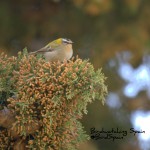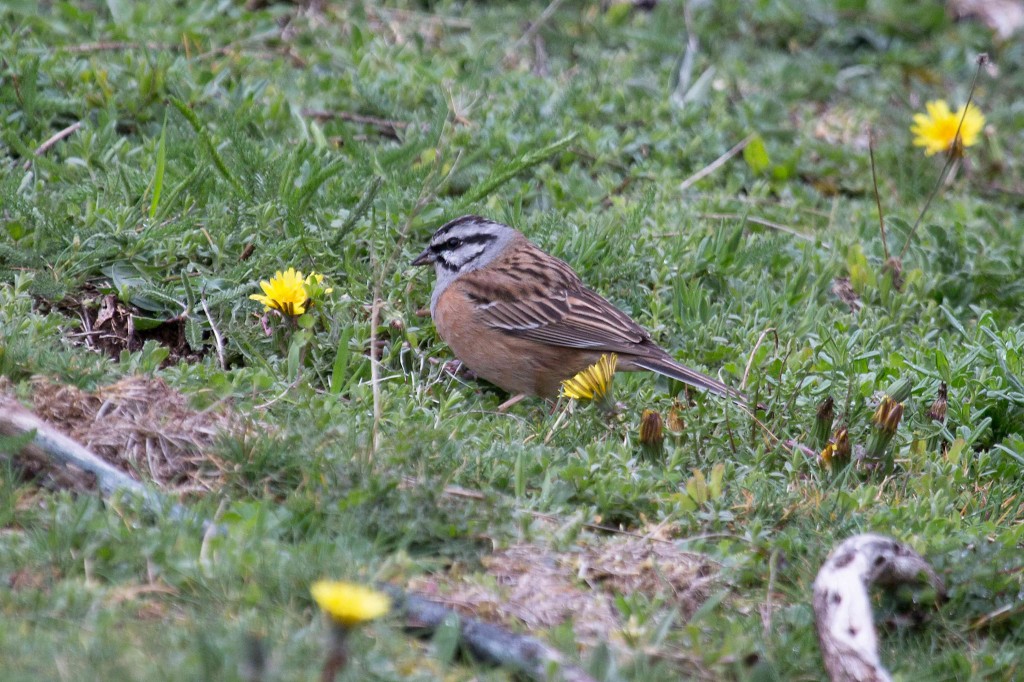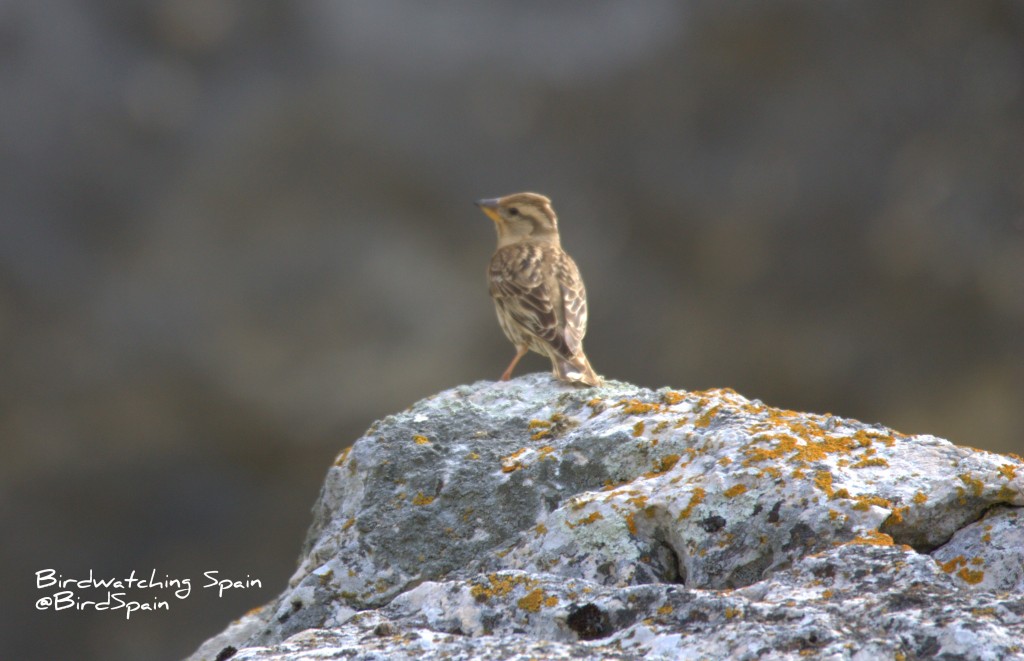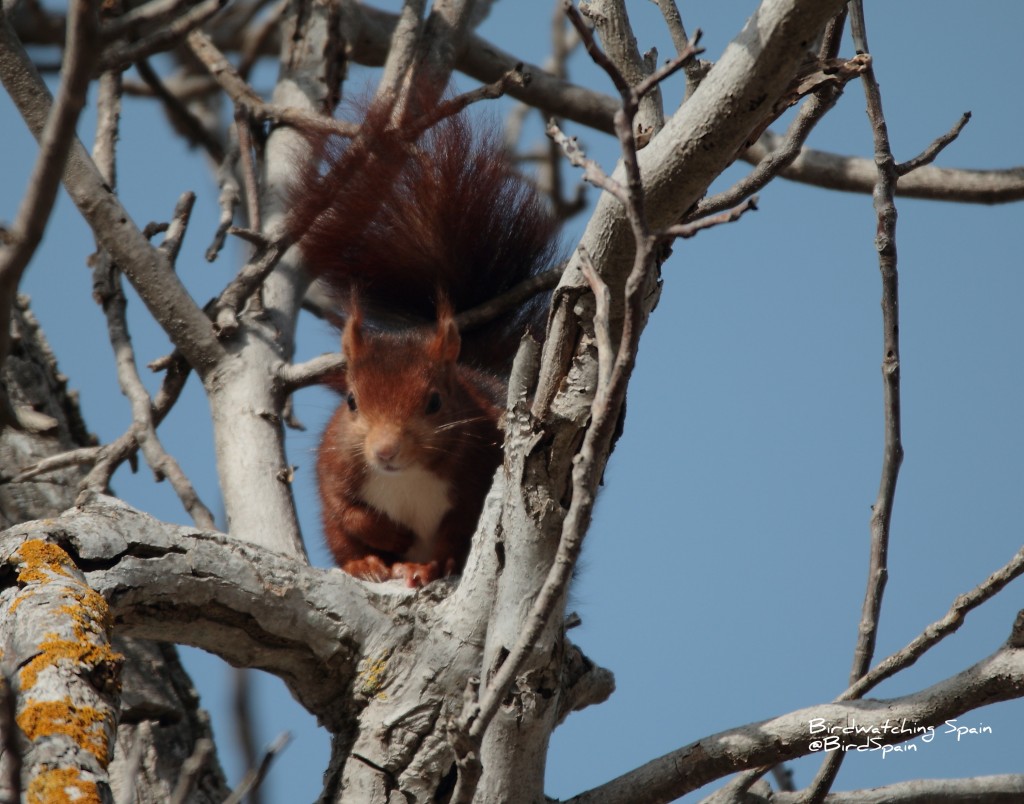Birdwatching and wildlife tours in Spain
Bird Watching Cazorla
This bird watching Cazorla trip report was held from March 14th-20th. This tour was followed by a 3-day tour to Doñana National Park. The combination of both sites is the perfect mix of habitats to watch a wide variety of wildlife and landscapes in South Spain.
Day 1. Bird watching Cazorla (Gandia-Cazorla Natural Park)
It is 9:00 a.m. and Charlotte, Katy, Joe, James and I are leaving from Gandia to the largest Natural Park in Spain, “Cazorla, Segura y las Villas”. They have been visiting their family in Gandia and they wish to finish their holidays with a birding tour through Andalucia. At 10:45 we stop in one of the best step habitat in East Spain, the steppes of Albacete. In the lagoons we see lots of Greater Flamingos, Red-crested Pochards, Avocets, Common Redshanks, Great Ringed Plovers, Black-winged Stilts, Dunlins, Ruffs and Avocets. In addition, birds such as Spotless Starlings, Crested Larks, Meadow Pipits and lots of different finches move around the farms.
As I am searching the sky watching a Marsh Harrier, I spot 3 Great Bustards flying towards us! James says: “That’s really a good start”. Around 4:00 p.m. we get into the car and continue our journey to bird watching Cazorla. Before we take the motorway, we find a Red Kite and a flock of 60 Rock Sparrows.
Two hours later we stop to have a coffee in a bar besides the road. A Hoopoe lands in a nearby post and a pair of Ravens display in the air. We get at dusk to our hotel in La Iruela, perfect time to check-in and have a traditional Spanish dinner.
Day 2. Forest birds (Cazorla Natural Park)
Our first visit in this bird watching Cazorla tour has been at the view point of Puerto de Las Palomas which is located over 1000 meters above sea level in the gorge of the Guadalquivir River. Woodlarks are perched in the wire, a pair of Ravens flies below us and Alpine Accentor sings. Ten minutes later, a Griffon Vulture offers a very close view as it soars. Charlotte is amazed! Ten minutes later more Griffon’s join.
Our next stop is in “el Chorro” where we enjoy magnificent views of Griffon’s displaying in the air and also nests with eggs. Large numbers of Red-billed Choughs fly from/to their nests in the crevices and a Peregrine Falcon crosses the sky. Blue Tits, Black Redstart, Chaffins and a Short-toed Treecreeper are also seen. In a nearby oak tree, I find two stunning Firecrests which give us the chance to photograph them. Charlotte and Katy are very pleased as it is their favourite bird and first lifer of the trip! The meadows are full of Iris and butterflies such as the Yellow Clouded and Little Blue.
After lunch we drive for one hour to reach the badlands of the South of the Park. As we get to the area, we observe 4 Corn Buntings perched in a blooming Almond Tree. Besides, Thekla Larks, Rock Sparrows, Meadow Pipits, Choughs, Sardenian Warblers are also seen. A beautiful Black Wheatear sings from a rock, it is the second lifer of the tour!. Suddenly, a gorgeous Goshawk crosses fast the hills following the river allowing just me and James seen it. The wide smile of James speaks for itself!
Day 3. Forest birds Sierra Cazorla
Today we head for the high part of the mountains. A quick stop in the Puerto de las Palomas reveals a male Rock Bunting which is the second “liver” of the trip. Then, we walk the Cerrada de Utrero route during 1 hour. There we enjoy superb views of nesting Griffon Vultures and Craig Martins. Mistle Trushes, Coal Tits, Blue Tits, Grey Wagtail and Ravens are also seen. After that, we continue the route seeing Red Deers, several Red Squirrels and Common Buzzards. The nearby meadows are cover by lilies, Crocus nevadensis and Crocus salzmannii.
The following stop is in the Poyos viewing point where we enjoy magnificent views of a Firecrest, Long-tailed Tits and Nuthatch. As we feel a bit tired after an intense birding day and considering that tomorrow will visit a promising steppe area in Sevilla, we decide to drive back to have an early dinner in the fantastic balcony of the Hotel.
The breathtaking views of the restaurant overlooking the town of la Hiruela, is the perfect place for continuing bird watching in Cazorla while we have dinner. A Peregrine Falcon and a Short-toed Eagle crosses the sky in front of us-absolutely brilliant. Serins, Robins, Barn Swallows and Black Caps are seen in the surroundings. This is the fantastic end of the bird watching Cazorla tour, however it is the start of our next stage of the trip as we are leaving to Doñana. If you are interested in visiting the area, please lets us know and we will organize a tour to this wonderful part of Spain.

Rock Bunting 
Rock Sparrow 
Red Squirrel 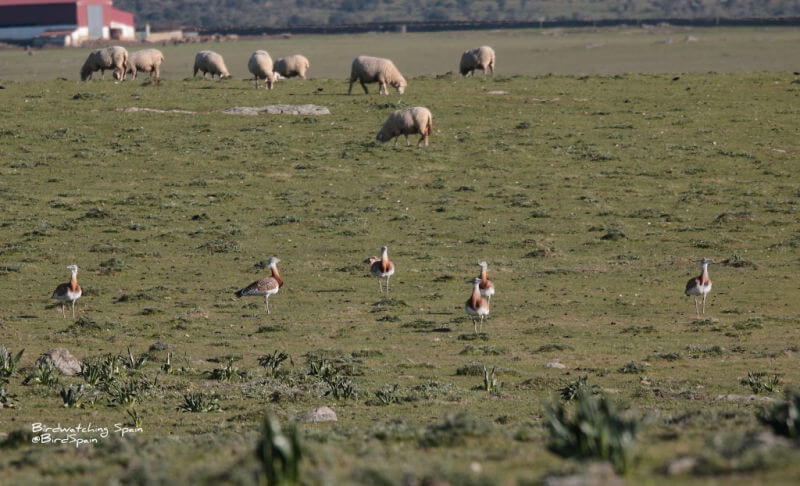
Great Bustard
Have a nice day
